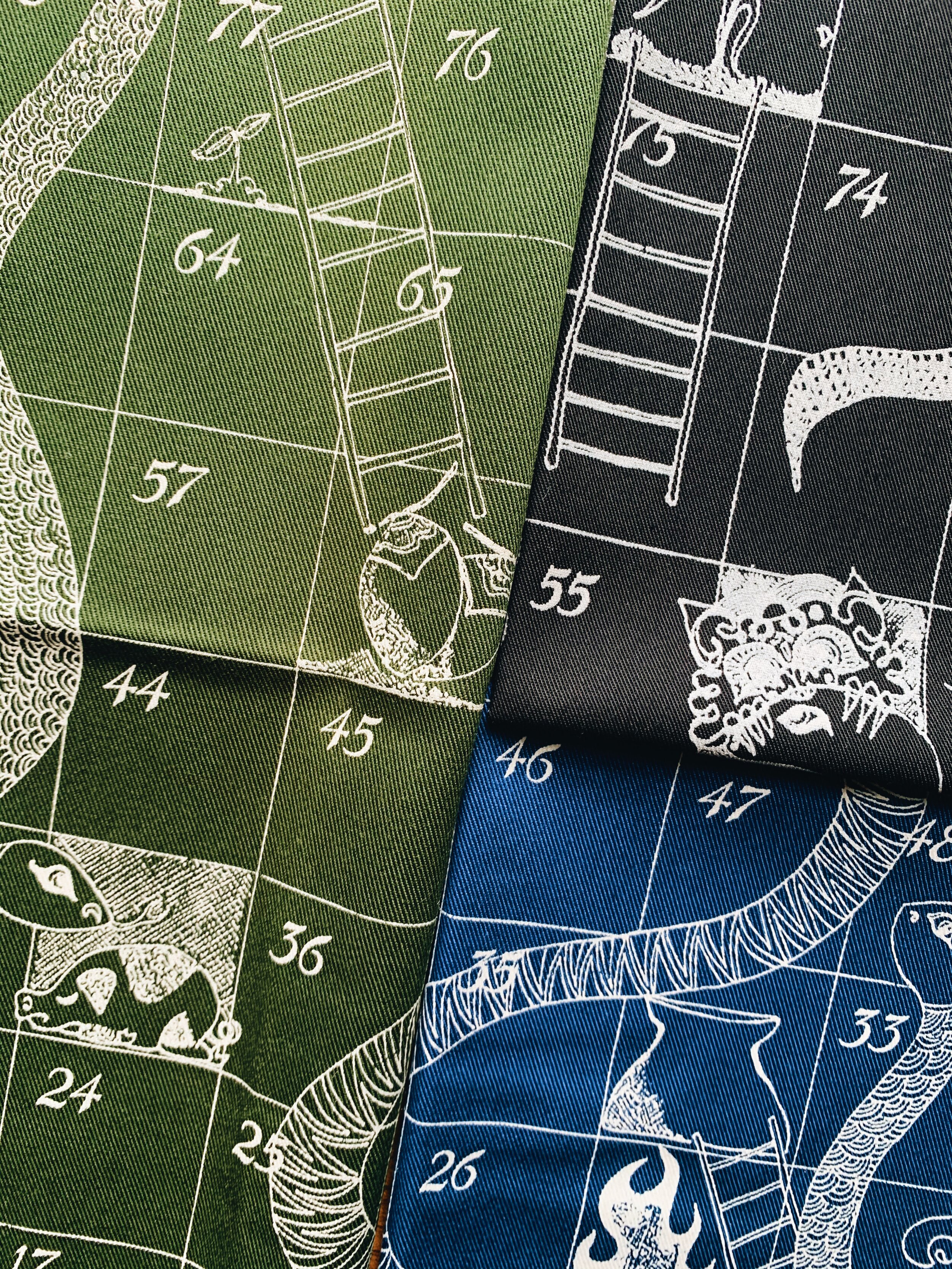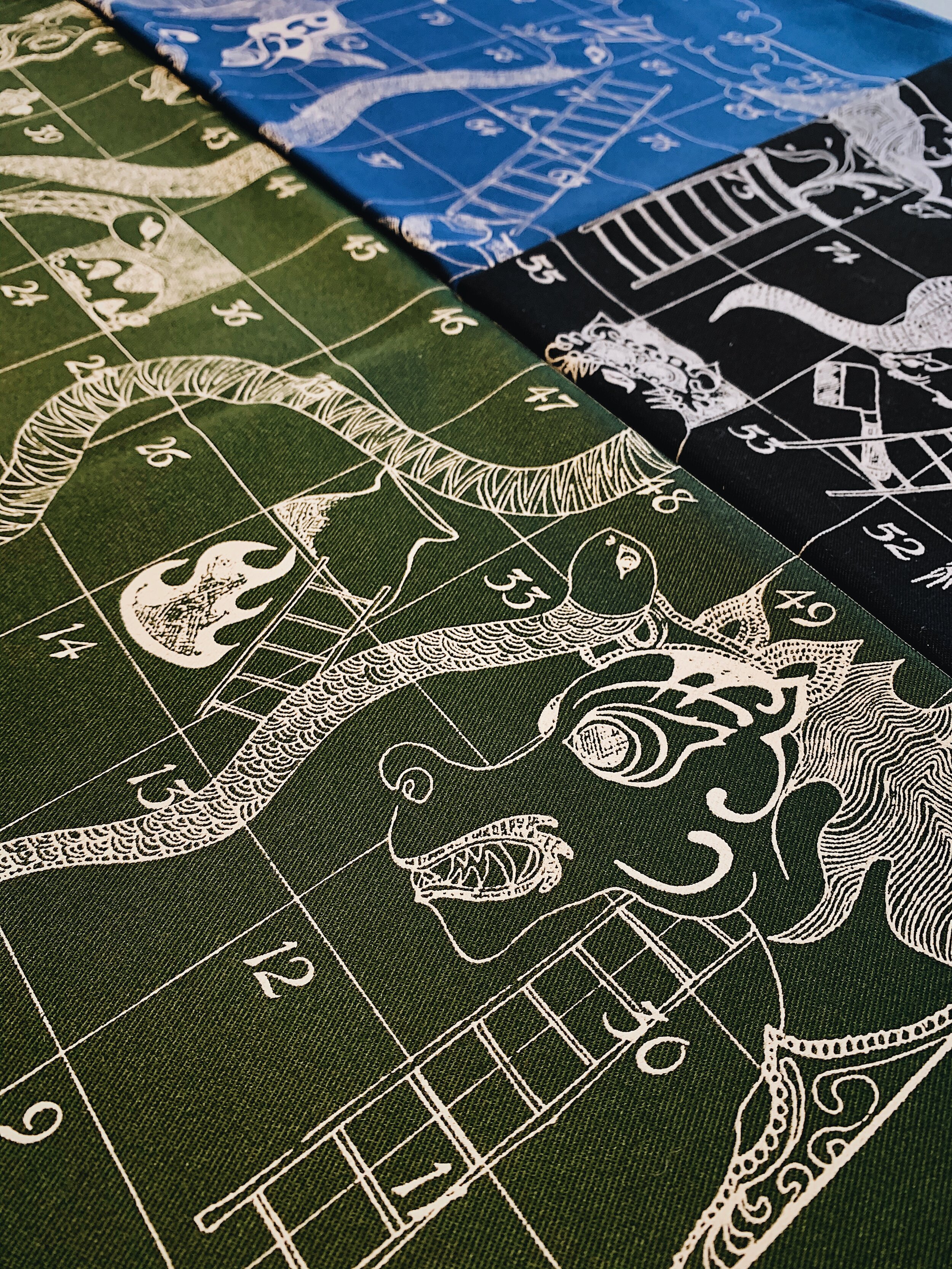Bali Snakes and Ladders! The launch of a new game
/We've wanted to create a game for years and thanks to this pandemic downtime, we've finally done it! Maya Kerthyasa lent us her amazing line drawing skills to create a board filled with Balinese myths... Snakes and Ladders, known as Ular Tangga in Bahasa Indonesia, has its origins in second century India.
“This version of Snakes and Ladders is inspired by Balinese life and mythology. At the bottom, we have Bedawang Nala—the turtle that carries the world—accompanied by the two dragons Basuki and Anantaboga. Spiritual nirvana is represented by Mount Agung and the heavenly realm above. The other illustrations are symbols of fertility, creation, enlightenment, abundance, death, disease, disaster and knowledge. Many of these symbolic drawings are inspired by life in and around the Balinese kitchen.”
—Maya Kerthyasa
More about the history of the game:
The game was popular in ancient India by the name Moksha Patam. It was also associated with traditional Hindu philosophy contrasting karma and kama, or destiny and desire. It emphasized destiny, as opposed to games such as pachisi, which focused on life as a mixture of skill (free will) and luck. The underlying ideals of the game inspired a version introduced in Victorian England in 1892. The game has also been interpreted and used as a tool for teaching the effects of good deeds versus bad. The board was covered with symbolic images, the top featuring gods, angels, and majestic beings, while the rest of the board was covered with pictures of animals, flowers and people. The ladders represented virtues such as generosity, faith, and humility, while the snakes represented vices such as lust, anger, murder, and theft. The morality lesson of the game was that a person can attain salvation (Moksha) through doing good, whereas by doing evil one will be reborn as lower forms of life. The number of ladders was less than the number of snakes as a reminder that a path of good is much more difficult to tread than a path of sins. Presumably, reaching the last square (number 100) represented the attainment of Moksha (spiritual liberation).
The specs:
» 50cmx50cm fabric board—screen printed on 100% cotton
» 2 wooden dice
» 4 stone tokens
Shipped in a handmade paper box.


























